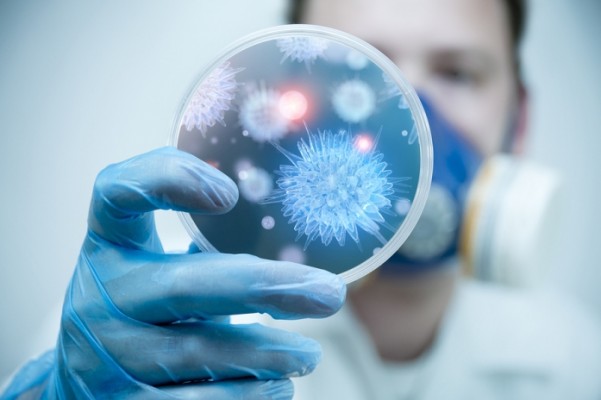Fulfilling the Industrial Requirement Through Identifying Indigenous Microorganisms

The scientific and technical deputy of the National Center for Genetic and Biological Resources of Iran Scientific and Technical Deputy of the National Center for Genetic and Biological Resources of Iran (Academic Center for Education, Culture and Research – Jahād-e Dāneshgāhi) said in an interview with SinaPress: "In the activities of the National Center for Genetic Resources of Iran, we have considered practical frameworks to overcome the issues and to solve the country's problems. We have always defined two main goals of "preventing wastage and destruction" and "using it to promote public welfare and the quality of social life".
He added: "We have completed 12 years of official activity of this center. In the first decade, the foundation of this center was laid. The framework of the activities of this Center in the second decade is the development of the activities of the first era. In this decade, we try to achieve the previous decade's plans.
This will be achieved by proper drafting and designing a multi-year vision plan, which we are currently developing in order to address and fixing the main social challenges that currently exist in terms of health, food, and economic security in society."
He stated: "Currently, there are 4 biobanks in the framework of the study of this center including plant, microorganisms, human and animal cells, as well as molecular, which have been operating for more than a decade. Due to health challenges, epidemics, and pandemics that require research and development in various industries for vaccines, diagnostic, prevention and treatment systems, the establishment of a virus bank has also been planned in this research center."
According to him, with the development of physical infrastructure, and with international standards, it is expected that this bank – as the most recent and standard repository of viruses – to officially start operating in the next two years.
Identification of 5,000 Microorganisms in Iran
Azerbaijani pointed to the position of Iran's genetic resources and said: "Iran is one of the regions with very high biodiversity in terms of genetic diversity in the world biodiversity classification."
He added: "Naturally, there is a very vast variety in the identification of microorganisms not only in Iran but in the world. Most of the microorganisms in the world are unknown, but we have access to common and tough microorganism resources including neutrophiles and extremophiles due to the climatic diversity in Iran. Extremophiles are present in very salty, very hot, acidic and alkaline, and oil areas."
He continued: "Also, our access to open waters and large lakes has provided an infinite source of various microorganisms resulted in a very large framework."
Identifying microorganisms, explaining and creating their characteristics is a very costly and tedious task," he told SinaPress. At the same time, it requires precision and very accurate analysis. Fortunately, the center's microorganism bank has done well in this area. Currently, according to international standards, the Bank of Microorganisms has been able to identify and store nearly 5,000 microorganisms.
"When we want to identify, isolate and store a microorganism with a pure biodiversity approach, we are in fact providing the raw material for those who need it," he told SinaPress. But a bio-bank at a global level such as the Bio-Bank of the United States, Germany, developed European and Asian countries, is not limited to the isolation of microorganisms but also specifies their applications. The National Center for Genetic Resources creates performs specific filters and analyses the selected types that benefit industry, agriculture, and pharmaceuticals.
He added: "One of the most specific technological and successful projects of this center is the screening of indigenous microorganisms that can be used in the food industry as probiotic starters. Today, through various analyses, our colleagues have been able to identify highly value-added microorganisms in various parts of the country. microorganisms that can meet the needs of industry and reduce the country's dependence. Also greatly reduces the threats posed by the entry of an unknown microorganism."
Iran's Plant Diversity is Equal to Entire Europe
The scientific and technical deputy of the National Center for Genetic and Biological Resources of Iran said: "In the field of plants, our colleagues have been able to work according to international standards for a decade, and plant bank of this center is one of the most systematic centers for the identification and storage of plant specimens.
"We have succeeded in creating seed samples, powder of plant extracts that have medicinal uses," he said. At the same time, we keep some of the samples in farm conditions; It is expected to maintain different bio-samples in a bio-bank.
Azerbaijani pointed out: At present, the plant diversity of Iran is very high; So far, 8,000 plant species have been identified in the country, which is close to the entire Europe.
In the end, he said: "There is a lot of work left to be done to manage and genetic resources. We have been working hard in this field and we are following this path according to international standards."
Interview by: Farzaneh Sedghi
Translated by: Mehdi Fallahi Panah

